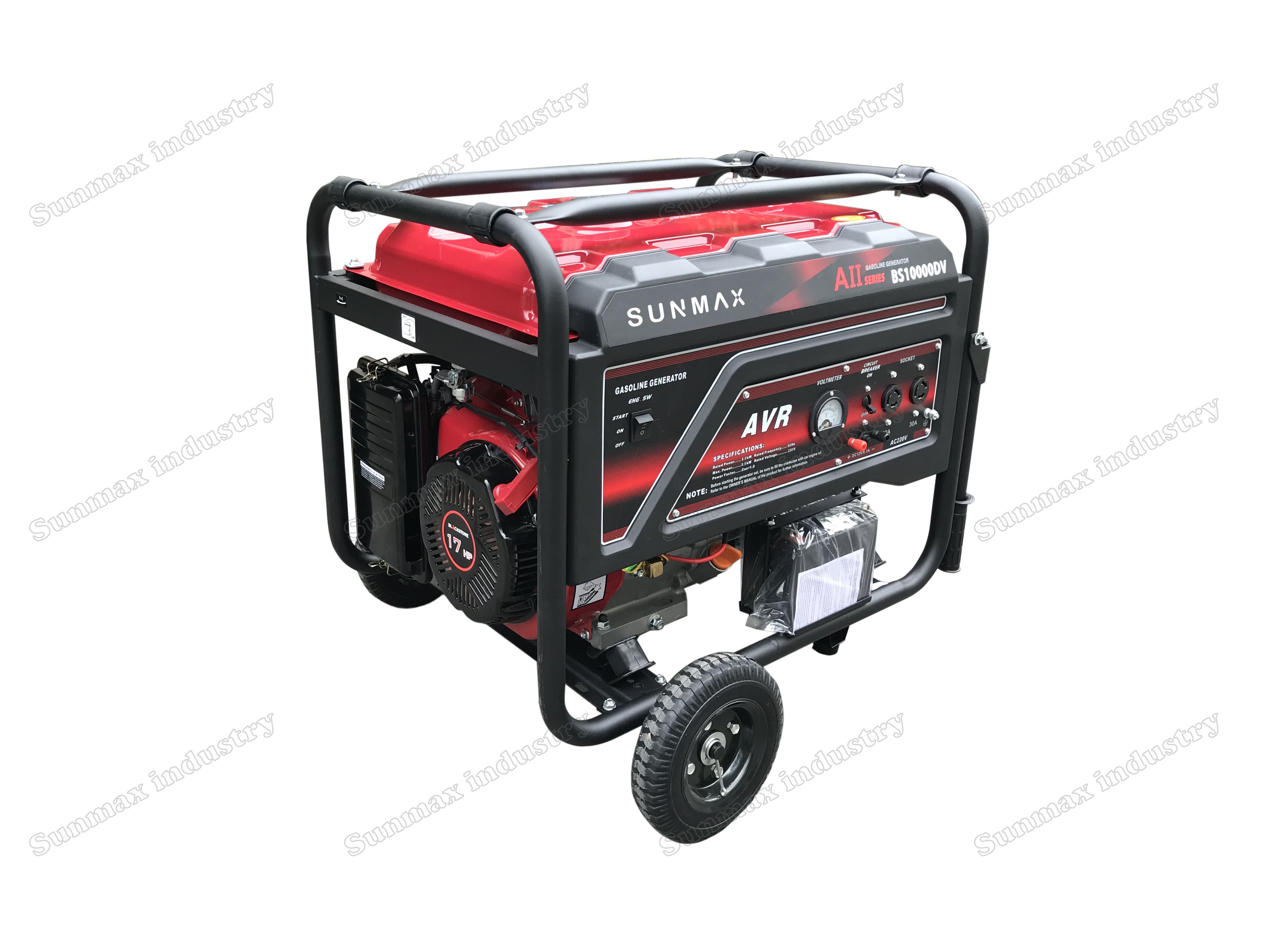
1. The gasoline engine cannot start or difficult to start
(1) Operation problems:
Press the switch to "ON", open the oil switch to "ON", close the choke (open the choke when the heat engine), check the oil level.
(2) Circuit:
A, spark plug; Too much carbon deposition, must remove the spark plug carbon deposition; The spark plug electrode gap is too large or too small, adjust the gap, 0.6-- 0.8mm; Replace the spark plug directly if the electrode is worn or the insulating porcelain is broken, damaged or corroded.
B. Igniter; If the spark plug is normal, check whether the igniter has power, no power there are several conditions resulting in ignition damage, flywheel demagnetization, single guide passer failure, oil sensor damage.
(3) Oil route:
Whether the gasoline in the tank is mixed with water, check whether the oil switch is smooth, whether the oil in the carburetor oil cup is metamorphic or not used for a long time, then let off the gasoline in the carburetor oil cup, carburetor volume hole is blocked, clean the carburetor.
(4) Air intake system:
A, air filter: check the air filter, if it is blocked by too much dust, less air, small proportion of air and fuel, too much fuel into the cylinder, resulting in spark plug "flooded", can not start normally. Elimination method: clean the air filter and dry the spark plug.
B, valve: valve clearance is too large or too small, resulting in difficult to start. Elimination method: adjust the valve clearance, intake valve clearance is 0.10--0.15; Exhaust valve clearance is 0.15--0.20.
(5) Cylinder pressure is too low:
It is generally a place closed lax, air leakage phenomenon. Elimination method:
A. Check whether each bonding surface (cylinder head and box body bonding surface, spark plug and cylinder head combined bonding surface) is fastened or whether sealing gaskets are missing.
B. The piston ring is badly worn and needs to be replaced.
C, valve stuck phenomenon, usually remove carbon deposition on the valve or directly more valve.
(6) Exhaust system:
Check whether the muffler is too dirty or blocked inside.
2. Insufficient power
(1) Check whether the valve clearance is appropriate;
(2) check the speed control system, gasoline engine is traveling;
(3) Check whether the carburetor damper is fully open;
(4) Check whether the cylinder head leaks;
(5) Check whether the cylinder block, piston and piston ring are worn;
(6) Check whether the air filter is blocked.
3, what are the common failures of the generator set?
(1) No voltage output:
No voltage; Use a multimeter to check whether the stator has voltage output. If yes, check whether the cable harness on the panel is in bad contact or detached. If not, check whether the carbon brush and slip ring are in effective contact. If the contact is bad, replace the carbon brush. Contact is good, check whether there is excitation current, if not, replace the voltage regulator. If yes, check whether the paying winding voltage exists. If no, the stator paying winding is broken and replace the stator. If not, replace the rotor. The damage of stator and rotor, a kind of disconnection, can be used to detect the resistance of the winding ohm range of the multimeter is ∞; One is short circuit, you can see that the insulation paint is burned by observing the appearance of the winding.
(2) High voltage:
First adjust the voltage regulator potentiometer, if there is no effect, first detect whether the voltage input voltage regulator, if the input, and then detect the pay winding voltage is abnormal, if abnormal, change the stator. If the voltage is still high, replace the regulator.
(3) Voltage low:
First adjust the voltage regulator potentiometer, if no effect, first detect the winding voltage is abnormal, if abnormal, change the stator. If the voltage is still low, replace the regulator.
(4) Voltmeter does not indicate:
Use a multimeter to test the voltages at both ends of the voltmeter. If no, check whether the connection of the wire harness is firm and reliable. If yes, the voltmeter is broken.
(5) Can not be turned off:
It should be that the flameout line on the panel is not well contacted or the flameout line is broken.